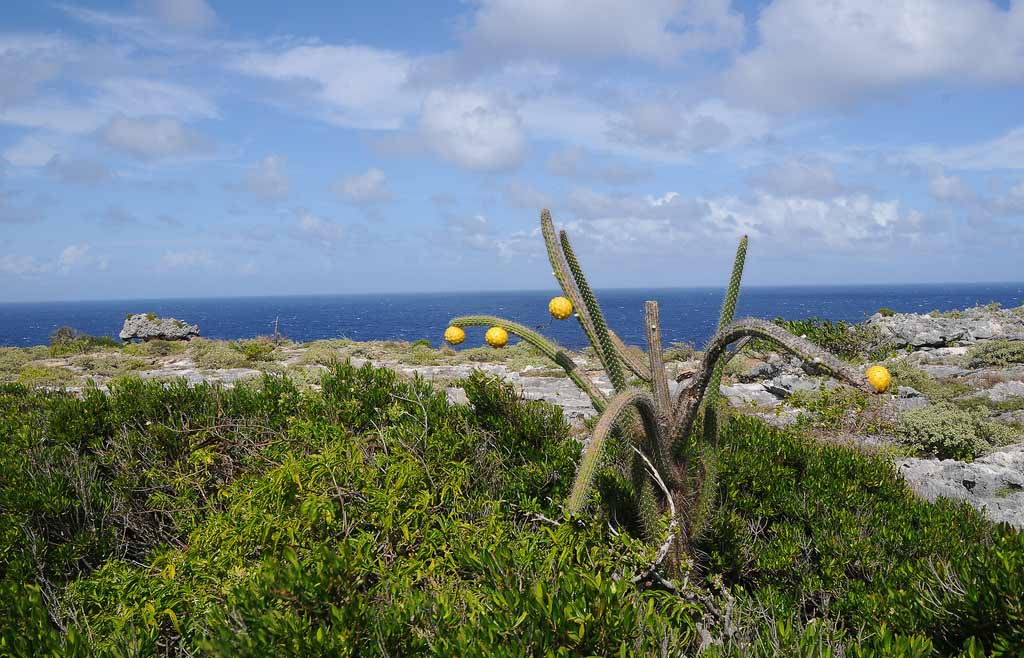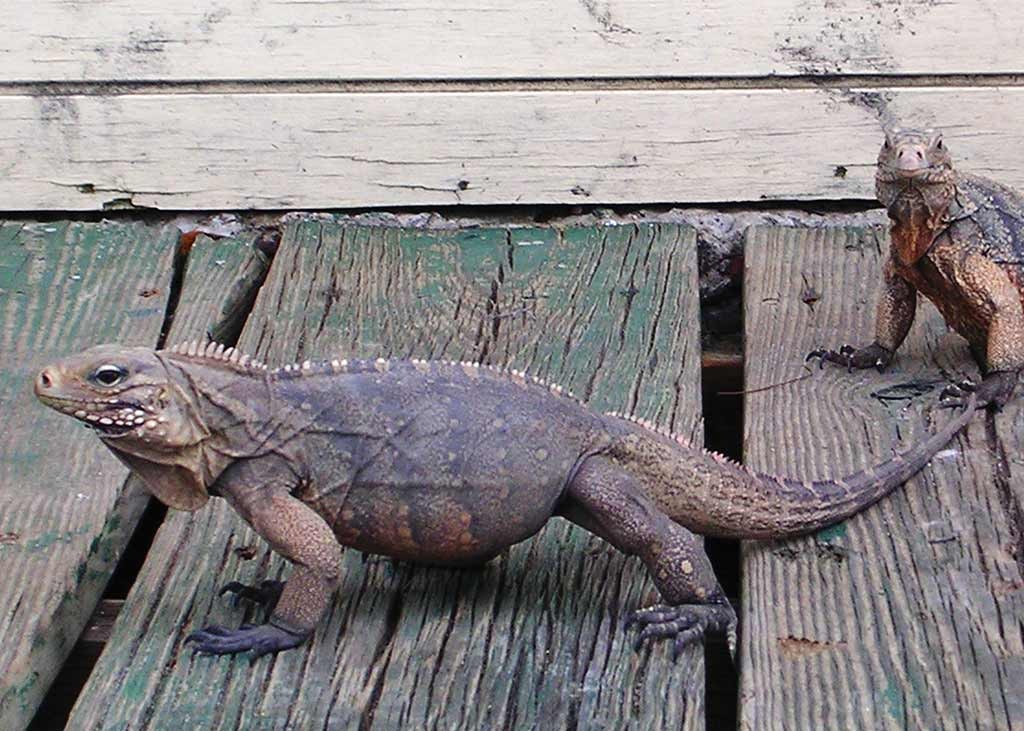Oh, the tales it could tell if Mona Island could speak. The 13,000-acre, virtually uninhabited island 47 miles southwest from Mayagüez and 37 miles east of the Dominican Republic has seen much drama through the years. At various times in its history, it was home to a thriving Taíno Indian village, a favorite stopover for marauding pirates, a secret hideaway for stolen treasure, the site of a lucrative mining operation, a vital breeding ground for migratory birds and sea turtles, and the final resting place for many a sailing ship sent careening into its unforgiving cliffs by rough waters and winds.

Higo Chumbo Cactus on Mona Island. Photo © U.S. Fish & Wildlife Southeast Region, licensed Creative Commons usage.
Petroglyphs, stone walls, cabins, and graves are enduring reminders of Mona’s colorful past.Today, Mona Island is a protected wildlife refuge, but unlike on Desecheo Island, up to 100 visitors per day are allowed to hike its trails, explore its ruins, camp on its beaches, dive or snorkel its crystal-clear shoreline, and hunt its feral pigs and goats, as long as permission is obtained from the Department of Natural Resources (787/722-1726). The island is a six-hour boat ride from Rincón or Mayagüez across the rough waters of Mona Passage, an important shipping lane that reaches 3,000 feet in depth. Several outfitters along the west coast offer overnight camping tours to the island, including Mona Aquatics (Calle José de Diego, next to Club Náutico, Boquerón, 787/851-2185).Commonly described as shaped like a lima bean, Mona is a semiarid subtropical island with 20 miles of coastline, most of it vertical cliffs rising from the sea to heights of more than 200 feet. The cliffs are penetrated by an intricate marine cave system that extends 150-800 feet under the island’s surface in some places. There are also three sandy beaches on the south and southwest coast.
The surface of the island is mostly flat coastal plain with little vegetation, but it is home to a rich diversity of wildlife, most notably the world’s only indigenous population of Mona iguanas. This prehistoric-looking reptile grows up to four feet long and wields its massive tail like a billy club. It has an aggressive appearance, thanks to a horned snout and jagged bony crest down its back, but it’s a harmless vegetarian that can survive as long as 50 years. Mona is also an important habitat for the inch-long geco oriundo lizard, hawksbill and leatherback sea turtles, and the red-footed booby, among other sea birds.

Mona iguanas are only indigenous to Mona Island. Photo © Suzanne Van Atten.
The island was visited by Christopher Columbus in 1493 or 1494. He was followed by Ponce de León, who arrived in 1508 and encountered a Taíno village of about 80 inhabitants, who fished the waters and cultivated yuca and sweet potatoes. During the early colonial years, Mona became an important source of agricultural products for the main island. Because of its location and lack of fortification, Mona became a pawn during Spain’s defense of Puerto Rico and the Dominican Republic against the French, Dutch, and English. Enemy ships would often stop here to obtain freshwater, raid the Taíno for their food and goods, and sink their enemies’ ships. In 1578, the 10-30 Taíno remaining on the island were transferred to Puerto Rico for protection from French raiders.
Mona remained virtually abandoned until the early 1800s, during which time its primary visitors were pirates, who stopped off to get water, repair their ships, or lie in wait to raid passing cargo ships. Infamous pirates, including Mateo Congo, Adrian Cornelis, William Kidd, and Roberto Cofresí, all spent time on Mona. Around the mid-1800s, it was discovered that Mona was a rich source of guano, and several mining operations were established. Several significant shipwrecks along Mona’s shore in the late 1800s contributed to the termination of operations. The last major operation on the island was the construction of a lighthouse by the United States in 1900.
Today Mona is home to a few rangers, employed by the Department of Natural Resources, who watch over conservation efforts and educate visitors on the unique environment. Three trails on the island connect its three beaches to the lighthouse on the eastern point. In addition to enjoying the island’s great hiking, diving, and bird-watching, visitors can explore the faint remains of the Taíno civilization and mining operations. Petroglyphs, stone walls, cabins, and graves are enduring reminders of Mona’s colorful past.
Excerpted from the Fourth Edition of Moon Puerto Rico.